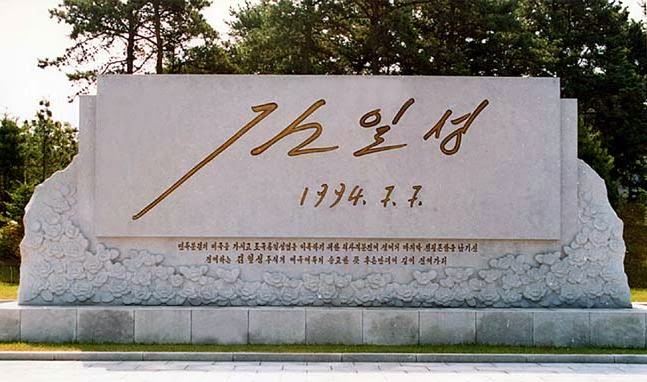KPA Supreme Commander Kim Jong Un inspects Panmunjom
Turning symbol of division into symbol of reunification
“Deeply grieving over the national division, President Kim Il Sung and General Kim Jong Il, the fathers of the nation and lodestars of national reunification, worked heart and soul throughout their life to hand down a reunified country to their fellow countrymen, laying firm foundations for the independent reunification, peace and prosperity of the nation.”
This is a paragraph from the New Year Address Kim Jong Un made for 2013.
In the truce village of Panmunjom, the granite monument dedicated to President Kim Il Sung’s last autograph on a historic document concerning the country’s reunification in the last moment of his life stands.
On November 24, Juche 85 (1996), Chairman Kim Jong Il, who had regarded the cause of national reunification as his lifelong mission true the noble intention of the President, visited Panmunjom where the Military Demarcation Line is within a stone’s throw away from it.
Standing in front of the monument dedicated to the President’s last autograph for a while, he said that the monument awoke me many things to think, the whole life of the President was that for national reunification, his last autograph bore his strong conviction and will to reunify the country and contained sure confidence in national reunification.
He said that it is his determination and steadfast will to turn Panmunjom, symbol of division into symbol of reunification true to the intention of the President.
He defined the three principles of national reunification, the 10-point program for the great unity of the whole nation and the proposal for founding the Democratic Federal Republic of Koryo set forth by the President as the three charters for national reunification to be upheld by the Korean nation. By advancing the five-point policy of the great national unity, he ensured that the President’s ideology of reunification is served as a constant guiding line.
By his bold decision, the two rounds of historic inter-Korean summit were held and the June 15 Joint Declaration and the October 4 Declaration were adopted with the result that the Korean nation’s movement for reunification met a new, higher level.
Reunification-oriented functions such as the pan-national reunification festival were held in Pyongyang, Seoul and other places and roads and railways between the north and the south had been re-linked and air and sea routes were opened for the people in the north and the south to visit each other. The emotional events were precious fruitions of energetic leadership of Chairman Kim Jong Il.
Now the ideas and exploits of the preceding leaders are being carried forward by Marshal Kim Jong Un.
Kim Jong Un visited the truce village of Panmunjom in March 2012 and looked the monument dedicated to President Kim Il Sung’s last signature carefully. He recollected with deep emotion the undying achievements of the President and the Chairman who devoted their lives to the country’s reunification.
Chairman Kim Jong Il visited Panmunjom four occasions and made sure that the monument dedicated to President Kim Il Sung’s last autograph was built in the truce village of Panmunjom to hand down his patriotic noble intention to posterity, the Marshal said.
The Korean nation witnessed the inflexible will of another brilliant commander of Mt. Paektu to reunify the country, pluck and grit, and was sure of the day of reunification through the great image of the Marshal who inspected the biggest hotspot where the north and the south of Korea stand in military confrontation with each other.
It is a steadfast faith and will of Kim Jong Un to achieve the historic cause of national reunification, lifelong desire and behests of the President and the Chairman, at any cost.
Whatever trials and difficulties lie in the way of national reunification, no one can stem the Korean nation’s advance for reunification under the banner of inter-Korean declarations, venerating Kim Jong Un as the lodestar of national reunification.



